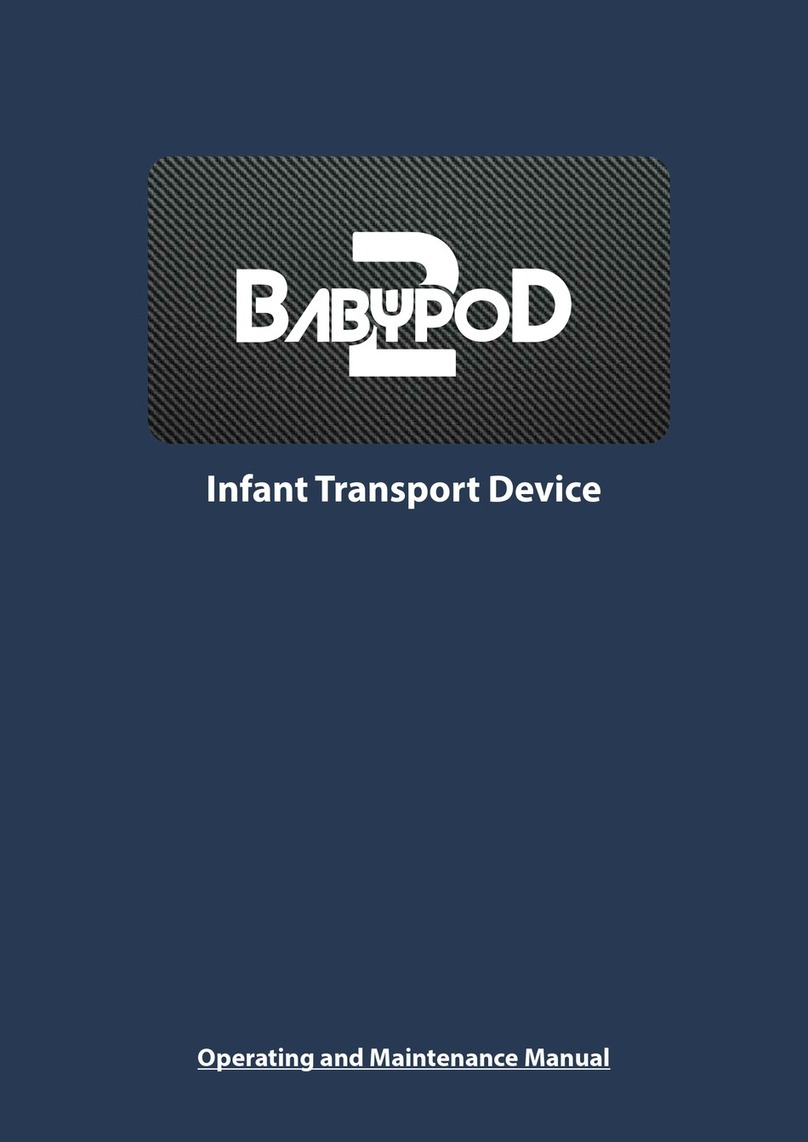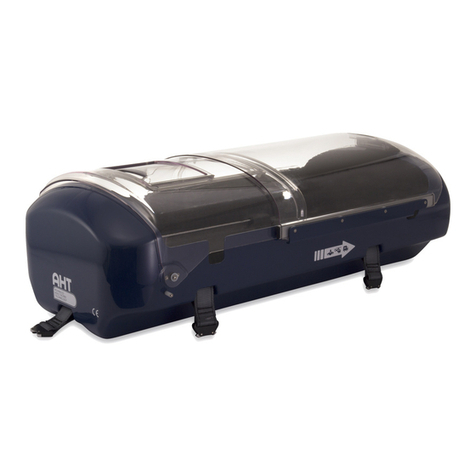
6© 2017 • Advanced Healthcare Technology Ltd. • Baby Pod 20 ®
Outer Shell
The outer shell of Baby Pod 20 is constructed of carbon ber, producing a strong yet lightweight and durable
material.
Shock Absorbent Foam
Baby Pod 20’s internal shock absorbent foam is contructed of polyeurethane foam with a PUNL® removeable cover,
which remains breathable yet impervious to liquids and solutions. The foam interior surrounds the infant’s head,
feet and sides during transport and is designed to help protect the infant in event of impact, and reduce vibrations
that might reach the patient from movements of the transporting vehicle. The covers can be removed and washed,
allowing for increased infection control.
Vacuum Mattress
Baby Pod 20’s vacuum mattress is manufactured from a soft foil and is lled with ame-retardant polystyrene
beads. Removal of the air from the vacuum mattress via the attached valve allows positioning of the baby within
the Baby Pod 20.
TransWarmer Infant Transport Mattress (Accessory)
Baby Pod 20 incorporates the Transwarmer Infant Transport Mattress which is designed to provide radiant heat
and shock absorption to the infant during transport. TransWarmer is manufactured using the patented WarmGel
technology, which provides even heating via non-migrating gel in a non-electric infant transport mattress. Infants
may be placed directly on the TransWarmer’s soft, non-woven surface.
Infant Positioning Straps
Baby Pod 20’s Infant Positioning Straps are manufactured from bands of soft foam which are attached to loop
velcro. Each set is SINGLE PATIENT USE ONLY. Baby Pod 20 contains one set of 4 Infant Positioning Straps, each
33cm in length, with 8cm of velcro loop pre-stitched to the ends for ease of use.
Stretcher Fixing Straps
The Stretcher Fixing Straps come in a set of two Side Straps, for xing the Baby Pod 20 width-wise to any stretcher
or gurney, and one End Strap, for xing the device length-wise to a stretcher or gurney. Baby Pod 20’s Stretcher
Fixing Straps are composed of a high-tensile polyester webbing with attached metal quick-connect and release
buckles.
Viewing Lid
The Baby Pod 20’s viewing lid is made from formed PETG, with a metallic sliding mechanism that contains no
bearings, allowing it to easily be cleaned and maintain durability. The large viewing area allows good visibility of
the patient during transport. The front section slides backwards allowing unhindered access to the baby’s head
and chest. For foot access, there is a sliding access port on the top of the Viewing Lid. When stationary, the entire
viewing lid can be lifted backwards over the end of the Baby Pod 20, allowing total access to the entire patient
compartment.
Co2 Evacuation System
If concerned about Co2 buildup in the patient compartment, this can be evacuated from the Baby Pod 20 via the
Entainment System. An air supply can be attached to the inlet on the “Head” end of the Baby Pod 20, which, using
only low pressure and jet ow and mixing principles, will draw the Co2 from the Baby Pod 20 interior and evacuate
it via an outlet at the base of the Baby Pod 20 “Head” section.
Section 3.2 - Component descriptions
Section 3
Getting to know Baby Pod 20 cont...





























